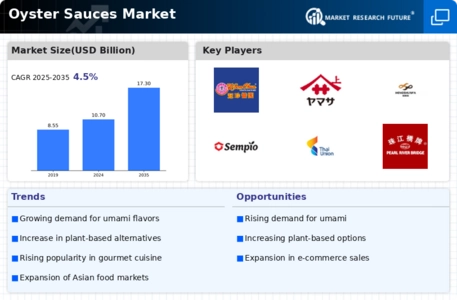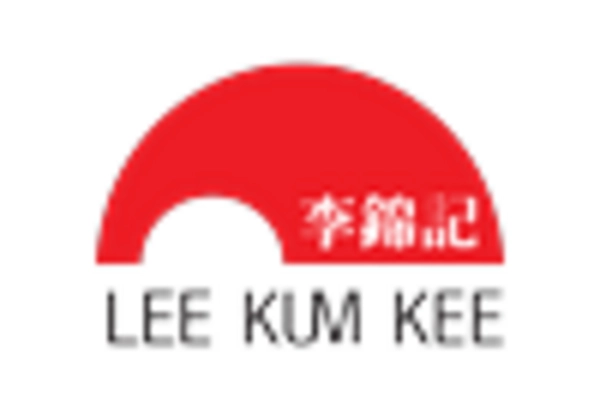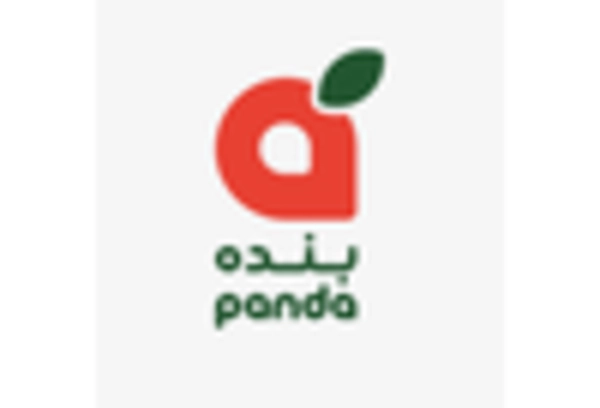Rising Popularity of Asian Cuisine
The increasing popularity of Asian cuisine, particularly in Western markets, appears to be a significant driver for the Oyster Sauces Market. As consumers become more adventurous in their culinary choices, they seek authentic flavors that oyster sauce provides. This trend is reflected in the growing number of Asian restaurants and food products available in supermarkets. According to recent data, the demand for Asian sauces, including oyster sauce, has seen a notable increase, with a projected growth rate of approximately 5% annually. This surge in interest not only enhances the visibility of oyster sauce but also encourages manufacturers to innovate and expand their product lines, thereby contributing to the overall growth of the Oyster Sauces Market.
Sustainability and Ethical Sourcing
Sustainability and ethical sourcing are becoming increasingly important in the Oyster Sauces Market. Consumers are more aware of the environmental and social impacts of their food choices, leading to a demand for products that are sustainably sourced. Manufacturers are responding by ensuring that their oyster sauce ingredients are harvested responsibly and that production processes minimize environmental impact. This commitment to sustainability not only appeals to environmentally conscious consumers but also enhances brand loyalty. As the trend towards sustainable consumption continues to grow, it is likely that the Oyster Sauces Market will see a shift towards more eco-friendly products, thereby influencing purchasing decisions.
Expansion of Retail Distribution Channels
The expansion of retail distribution channels is playing a crucial role in the growth of the Oyster Sauces Market. With the rise of supermarkets, hypermarkets, and specialty stores, consumers have greater access to a variety of oyster sauce products. This increased availability is complemented by the growth of e-commerce platforms, which allow consumers to purchase oyster sauces conveniently from home. Recent statistics indicate that online sales of food products, including sauces, have surged, with e-commerce expected to account for a significant share of the market in the coming years. This trend not only enhances consumer accessibility but also encourages competition among brands, ultimately benefiting the Oyster Sauces Market.
Culinary Innovation and Recipe Development
Culinary innovation and recipe development are vital drivers for the Oyster Sauces Market. Chefs and home cooks alike are increasingly experimenting with oyster sauce in diverse recipes, ranging from traditional Asian dishes to contemporary fusion cuisine. This versatility enhances the appeal of oyster sauce, as it can be used in marinades, stir-fries, and even salad dressings. The growing trend of cooking at home, particularly among millennials, has led to an increased interest in unique and flavorful ingredients. As culinary creativity flourishes, the demand for oyster sauce is likely to rise, further propelling the growth of the Oyster Sauces Market.
Health Consciousness and Clean Label Trends
The rising health consciousness among consumers is influencing the Oyster Sauces Market in various ways. Many consumers are now more inclined to choose products that are perceived as healthier or made from natural ingredients. This shift has prompted manufacturers to reformulate their oyster sauces, reducing additives and preservatives while emphasizing clean label practices. Data suggests that products labeled as organic or free from artificial ingredients are gaining traction, with a significant portion of consumers willing to pay a premium for such options. This trend not only aligns with the health and wellness movement but also positions oyster sauce as a versatile ingredient that can cater to health-conscious consumers, thereby driving growth in the Oyster Sauces Market.


















Leave a Comment